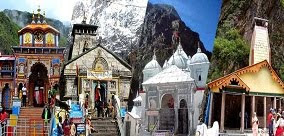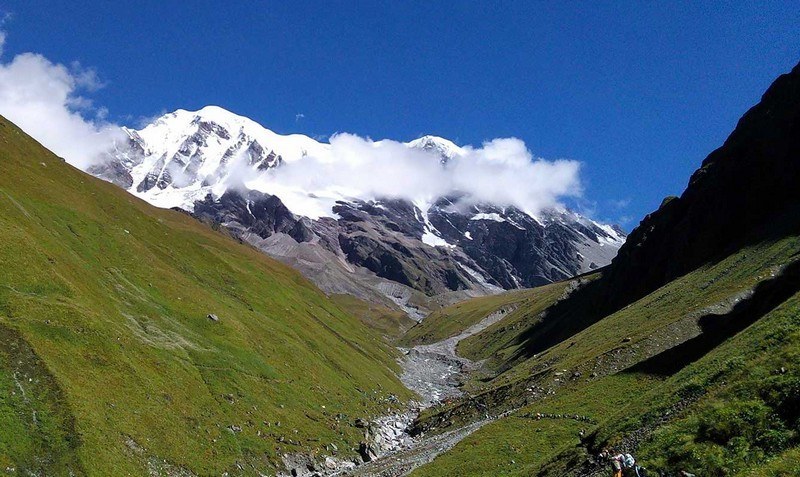The Kuari Pass (literally meaning ‘getting away) trek that is at an altitude of roughly 12,700 feet officially starts at Joshimath, gradually giving you a splendid view of the Himalayas as you go higher. Along the way, you will get to see a confluence of the Bhagirathi and Alaknanda tributaries at Devprayag before finally witnessing the majestic Nanda Devi peak along the way. This is a summer trek, which needs to be covered during the day. It is normally covered within 6-7 days depending on the speed and number of stops taken. The temperature can range anywhere between 10-18 degrees and will drop as low as -3 degrees at night.
Trek Villages
Dhaki Village: This spreads over 2-3 km and has a forest
where you can find oak and rhododendron trees that tell a story. Shepherds from
nearby areas come here to graze their animals and quench their thirst from the
accompanying stream. These forests and grazing areas are found at regular
intervals and are a sight for sore eyes from the polluted cities of the
country.
Karchi Village:
This village needs to be seen for the paddy farming that they do at such a high
altitude. You won’t expect irrigation channels running through villages at such
a high altitude.
Tugashi Village:
You can see Himalayan culture at its simplest and best form here- wooden houses
with storage facilities for cattle and sheep for all seasons. This village will
make the trek more interactive as you’ll get a taste of indigenous
organizational skill here. After this, the trek actually starts, as you’ll see
fewer habitations and green covers.
Jhinjhi Village:
This is another village which will make your trek more interesting as you’ll
see the Himalayan lifestyle in its truest form. A trail through these villages
will eventually take you to the valley floor where you’ll cross the bridge over
Birahi Ganga before the immediate suspension of the trek.
- Also Read: Famous Places to Visit in Uttarakhand
Trek Difficulty of the Kuari Pass Trek
This is one of the
easiest treks in Uttarakhand, India for a beginner. While it could seem like an
easy trek for most, it might pose minor issues for those people who are
starting out and have mountain sickness or hypothermia to battle. In this case
it will be termed as a trek of moderate difficulty.
Route Map of the Kuari Pass Trek
In spite of the range of settlements and villages that
you’ll find along the way, there are two alternate routes to cover this trek.
One goes through Auli while the other goes through Tugashi. While the first
half of the Auli route is a lush green landscape carpeted with the flora and
fauna, of the Himalayas the latter half is relatively barren and difficult for
some animals to pass by. The smart option would be to take a combination of
both routes by consulting local guides. The trail through Tugashi, Joshimath
and Mirag will be laced with small meadows that are silent and peaceful whereas
the Auli route will have more bugyals (alpine pasture lands). If you return via
Tapoban then you can have a refreshing dip in the hot water spring there, which
will be much needed after the trek. There are many alternative routes to the
same trek, which can be decided after consulting with your camp guide according
to the number of people and their age groups.
Weather for a favourable trek of the Kuari Pass Trek
It is advised that Kuari Pass be avoided in the monsoon
since the slopes will be slippery and trekkers will be prone to accidents.
Summer temperatures can range between 18-28 degrees whereas winter temperatures
are between -8 and 12 degrees. April to
June is the summer months where you won’t need to carry heavy clothes.
September-November is the ideal time when the fauna will be in its full glory.
Hope you have enjoyed our Kuari Pass Trek Blog. Do send us your comments and share this to help your fellow trekkers.







No comments:
Post a Comment